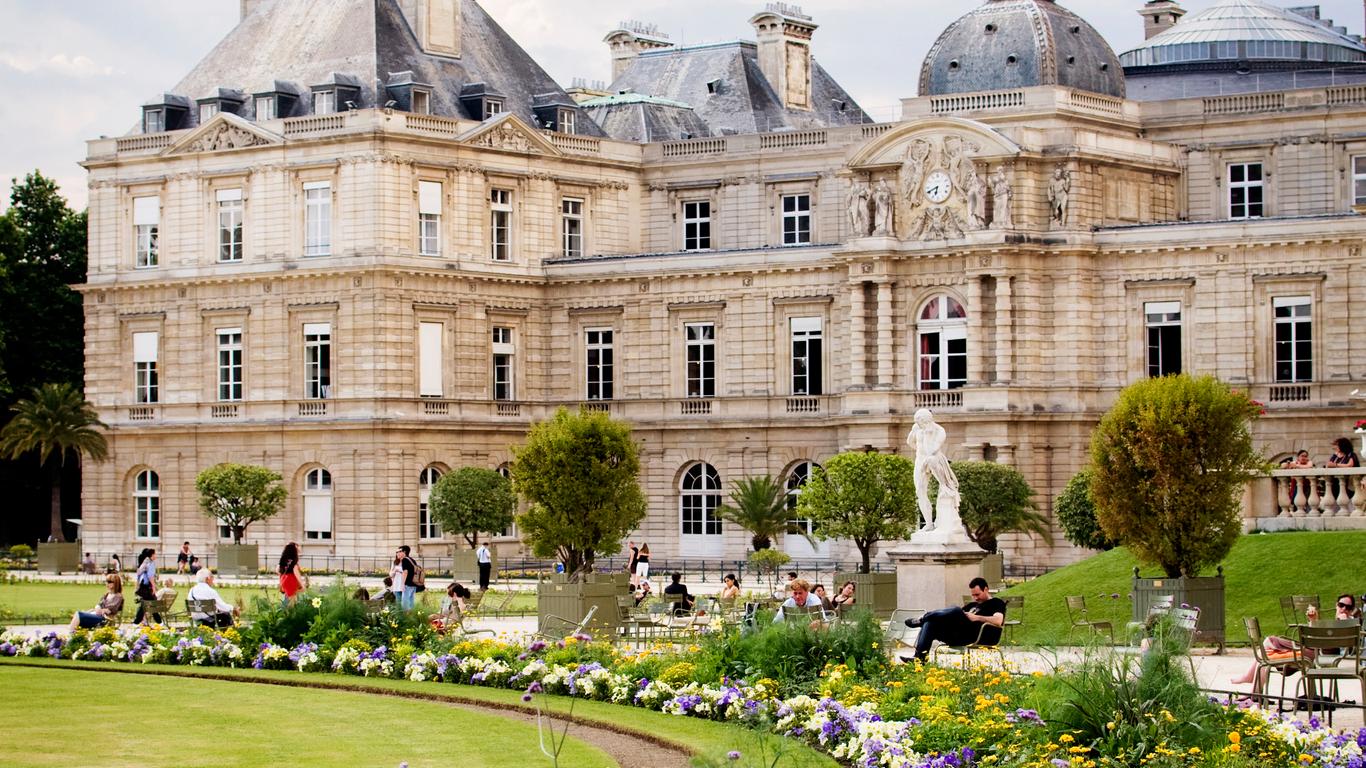Covering 25 hectares between Saint-Germain-des-Prés and the Latin Quarter, the Luxembourg Gardens are one of Paris’ most magnificent green spaces. It is divided by a forest and large basin of water into French and English gardens, and renowned for its statues of former French queens and saints.
Today the Jardin du Luxembourg is owned by the French Senate who holds meetings in its adjacent palace, but its green lawns and tree-lined promenades are open to the public and provide a tranquil respite from the city. The circular basin in the centre is a popular place for children and adults alike to play with model sailboats, while the monumental Medici Fountain, designed by Florentine fountain maker Tommaso Francini 1620, remains a landmark meeting point. There’s an orchard in the south-west corner with both common and rare apple and pear species, together with a marionette theatre and a fenced-in playground with a vintage carousel. Particularly during the warm summer months, musical performances are held within one of the garden’s gazebos, while the Orangerie is noted for displaying revolving exhibits of photography, art and sculpture. In addition to honouring French queens, there’s also statues of Ludwig van Beethoven, the first model of the Statue of Liberty, and numerous animal sculptures throughout the gardens. The Jardin du Luxembourg has also played a central role in literary tradition, with the love story between the main characters of Victor Hugo’s novel “Les Miserables” unfolding here, and the final scene of William Faulkner's novel “Sanctuary” set within the gardens.
The Luxembourg train station lies on the eastern edge of the gardens, together with numerous bus stops along the northern and western edges. The gardens are a magnificent place to stroll and make a pleasant way to access the sights of both Saint-Germain-des-Prés and the Latin Quarter.
It was the widow of Henry IV, Marie de’ Medici, who initially established the Petit-Luxembourg palace and gardens in 1611, designed in the style of a palace and garden she had known as a child in Florence. While successive monarchs largely neglected the garden, it was the Arc de Triomphe’s architect, Jean Chalgrin, who restored it following the French Revolution.





